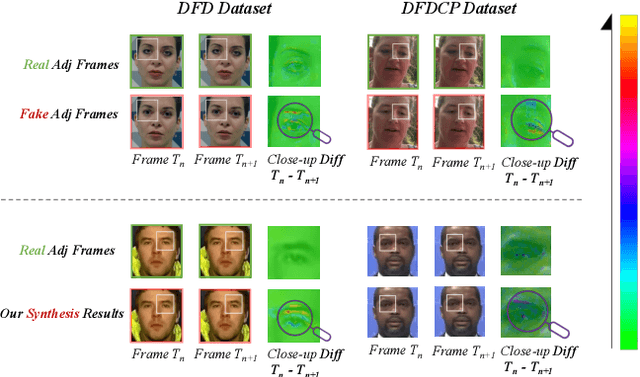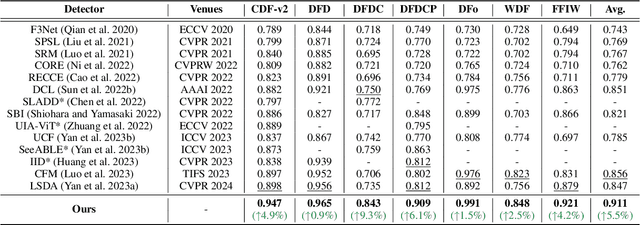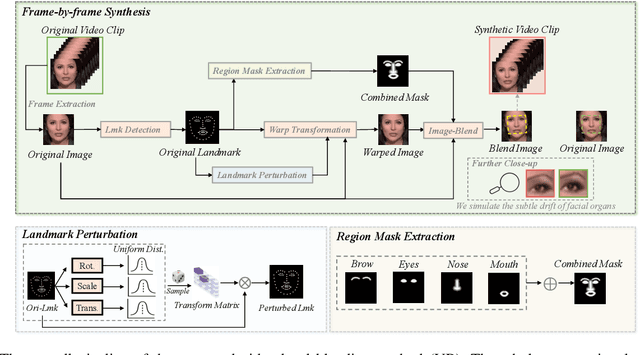Generalizing Deepfake Video Detection with Plug-and-Play: Video-Level Blending and Spatiotemporal Adapter Tuning
Paper and Code
Aug 30, 2024



Three key challenges hinder the development of current deepfake video detection: (1) Temporal features can be complex and diverse: how can we identify general temporal artifacts to enhance model generalization? (2) Spatiotemporal models often lean heavily on one type of artifact and ignore the other: how can we ensure balanced learning from both? (3) Videos are naturally resource-intensive: how can we tackle efficiency without compromising accuracy? This paper attempts to tackle the three challenges jointly. First, inspired by the notable generality of using image-level blending data for image forgery detection, we investigate whether and how video-level blending can be effective in video. We then perform a thorough analysis and identify a previously underexplored temporal forgery artifact: Facial Feature Drift (FFD), which commonly exists across different forgeries. To reproduce FFD, we then propose a novel Video-level Blending data (VB), where VB is implemented by blending the original image and its warped version frame-by-frame, serving as a hard negative sample to mine more general artifacts. Second, we carefully design a lightweight Spatiotemporal Adapter (StA) to equip a pretrained image model (both ViTs and CNNs) with the ability to capture both spatial and temporal features jointly and efficiently. StA is designed with two-stream 3D-Conv with varying kernel sizes, allowing it to process spatial and temporal features separately. Extensive experiments validate the effectiveness of the proposed methods; and show our approach can generalize well to previously unseen forgery videos, even the just-released (in 2024) SoTAs. We release our code and pretrained weights at \url{https://github.com/YZY-stack/StA4Deepfake}.
 Add to Chrome
Add to Chrome Add to Firefox
Add to Firefox Add to Edge
Add to Edge